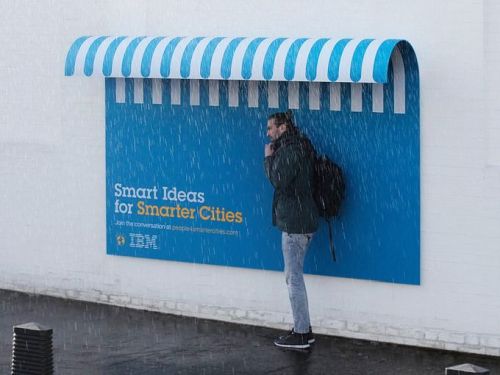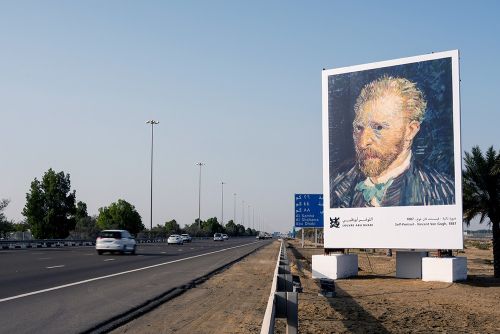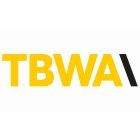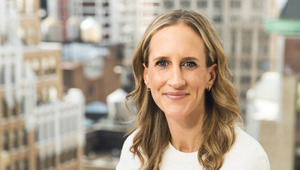
Chris Garbutt on Why Outdoor is so Powerful in an Age of Digital Distrust

At its best, outdoor advertising represents the purest manifestation powerful, simple creativity. To have impact, the great work takes just seconds to unpack and has the power to stop a busy commuter in their tracks. The canvas is often pretty dull, so to do something that really wows, creatives have to truly hack the medium. And when it works well, it brings delight and truly transforms the physical environment.
Chris Garbutt is the president of Cannes Lions’ Outdoor category this year and as far as he’s concerned, the physicality of Outdoor also makes it one of the most powerful and relevant channels of all, particularly when topics like fake news and the Cambridge Analytica scandal have broken down trust in the digital space. One of this year’s big Oscar winners was, in fact, an ode to the power of outdoor advertising: Three Billboards Outside Ebbing, Missouri.
LBB’s Laura Swinton caught up with Chris before he headed over to Cannes to find out his thoughts about the great outdoors.
LBB> So, what’s the pre-judging been like so far?
CG> It’s interesting because I’ve just finished going through the long list – we’ve been judging online for the past three or four weeks already – and there’s a lot of work. I love outdoor because it is simple; you’ve got to be able to get the idea in the first three or four seconds, otherwise it doesn’t work in the real world. It’s got to stop you in your tracks and draw you in.
But having said that every single entry now has a case study. You won’t believe it. Even the posters have a case study. It’s kind of tedious. Every now and then you get just a clean simple idea without a case study but it’s very rare.
LBB> As a medium, outdoor feels like a bit of a creative playground. You got a few specific parameters that you’ve got to push as far as you can!
CG> Definitely. I love it when we’ve got a very constrained brief because that forces you to think differently about it. The most iconic ideas really reinvent the category and do something that everybody else hasn’t thought about.
The creative achievement is figuring out something that no one else could, that everyone else has been staring at for so long. If you look at the Grand Prix over the past couple of years… Fearless Girl as a statue was the oldest medium in the world but the context in which it was put and the time it was put there created this alchemy that generated a huge story. The IBM Smarter Cities campaign that I won Grand Prix for a couple of years ago gave marketing and advertising a usefulness and sparked a conversation online.

I think the best outdoor always does that – and the simpler the execution to get to that the better. If its over-contrived or there’s too much effort or layers behind it, it’s not as clever as when Nike puts a ticker tape across an escalator with swooshes on it that says, ‘Just Do It’ and you have to take the stairs instead. They just flipped it and -boom – they’ve got something genius.
LBB> You touched on the importance of context when it comes to outdoor advertising. Do brands and creatives have a responsibility to add to the collective outdoor environment rather than make it ugly?
CG> Definitely. If you think about life, the way you get push notifications all the time, the way brands are analysing your data to try to profile, they’re throwing a lot of stimulus that you don’t want to engage with. It’s the same when you’re walking down the street. How many outdoor sites do you remember from the subway to work? It’s very rare that one pulls you in. You can definitely improve an environment or create an experience that’s valuable to people or memorable and can talk about and trade on social currency afterwards. I think that’s where the value comes in.
For example, there’s a wonderful idea that I’ve seen for the David Bowie exhibition in downtown New York. It’s a subway takeover and they really went into the history and passion points around David Bowie and changed the environment, created a beautiful exhibition in the subway in the Bowery. Everyone was talking about it. There was a craze of collecting all the subway cards with the artwork on them. I think that’s where we can actually improve a dull environment.
LBB> In your President’s Message you spoke about the tangible nature of outdoor and how it can serve as something reliable in an age of distrust in the online environment around fake news and bots. Is that something you’re hearing from clients?
CB> We’re not hearing it in specific words from clients - we’re hearing it from the business. The biggest growth category in the business is experiential and events, which is interesting, because whenever society gets sick and tired of something, it over-corrects the other way. I think people are really tired of the distrust of everything. You can’t trust anything anymore, especially over the past few years with fake news and elections, it’s a never-ending slide of distrust. So, I think the opposite is happening.
Humans are longing for very simple, tactile experiences again where they can see something at face value, experience it first hand and there are no layers in between them and it’s physical. It’s pretty basic. I’m from South Africa; I like to be barefoot and feel the grass between my toes. All of those things are more meaningful because they’re fundamental for human beings; it’s physical contact with other people and things they experience themselves in the world. If you put someone in a story, it’s much more memorable and valuable than if you’re telling it to them on a screen. I think outdoor has a huge opportunity to stop people in their tracks during their daily life, during an experience that they’re already involved with and plus that experience or add value to that experience.
LBB> This year we saw an Oscar-winning film celebrating the power of Outdoor with Three Billboards Outside Ebbing Missouri. In London we saw a version of that protesting the authorities’ lack of action outside Grenfell, the site of a tragic and scandalous fire. It’s interesting to see the power of Outdoor being discussed outside the industry…
CG> That’s always the challenge. At TBWA our competition isn’t other agencies out there, it’s culture. Every day on the newsfeed there are new viral stories and a lot of energy around these conversations – the challenge is to be part of culture. We talk about involving our brands in the heart of 21st century culture. And I think when a piece of work breaks out of the medium it’s in and it breaks out of the category of marketing and it becomes part of culture, that’s awesome.
I loved Three Billboards – it was one of my favourite movies last year. And I think it was because when she put those billboards up they were physical and you couldn’t ignore them, you had to pass by them as part of their daily routine. There’s just something powerful about something that’s manifested physically in the world. It becomes part of your life.
Take our Louvre Abu Dhabi outdoor gallery campaign that TBWA\RAAD in Dubai did. They took a strip of desert highway that was dull and boring and transformed it into an experience that allowed you to learn about art on the way to the Louvre. That to me is like taking a situation and plussing it. They then hijacked a radio frequency and suddenly you could learn about art in a away that was engaging and improved the journey. That’s where the magic is.

LBB> And what criteria will you be using to assess the work this year?
CG> I like to talk about the magic of ‘three’. Any amazing piece of work makes you ask yourself three questions. The first is: “How did they think of that?” Normally it’s a really simple, insightful idea, based on a human need. So, in this case, the insight was ‘this is a really boring journey, how can we enrich it?’.
The second question is, ‘how did they make that so beautifully?’ It’s got to be flawless, and ‘plussed’ in a way that pushes it to the borders of creative excellence.
And the third thing is, ‘how did they convince clients to buy that’? Often the best ideas are so brave and risky and they’re often the opposite of what a lot of clients feel comfortable buying. They often base their choice on what they know. In a way, our job is to disrupt the category and do something completely different that no one’s ever thought of before. That’s the magic of three and that’s what I’m looking for in the work this year.
LBB> In terms of the prejudging process, have there been any overall themes or trends that you’ve seen amongst the work as a whole?
CG> It’s difficult to answer that yet – let’s talk next week!
But what I love about Cannes and why we value it is that it pushes you to want to do better. It’s inspiring. And you do tend to see lots of new trends emerging. What we tend to do straight after Cannes is head to Paris as a small group of creatives and strategists and we hit reset. We like to think of our culture is that it’s always in beta because the one thing that you can be sure about the future is that every day it’ll change! And no one truly knows what it will be next, but we’ve got to be on the front foot and truly excited about change.
We’re seeing trends like a lot of brands are adopting a moral compass, that’s really interesting. It’s been going on for a couple of years, but I think ethics will become currency for clients going forward. You hear consultants like Jonathan Mildenhall talking about this at the moment.
Reductionism is another big theme. How do you stop people across language barriers. Think about Twitter last year – a beautiful image and a hashtag and that’s it. Or think about Apple World Gallery, giving the power to the audience to celebrate creativity. That’s gone onto Instagram now and has become a community of creativity.
Platform hacks - that’s another new one. There are all these new platforms coming out and they’re white spaces, essentially. How do you hack them? The best hack to me is when you take an outdoor space and hack it. And it’s really creative if you can do that in an original way because it’s been done so many times. Think about ‘OK Google’ last year with Burger King.
Another interesting thing that’s happening – and it’s the opposite of that lo-fi, quick production that a lot of production companies are getting pushed into – is that you’re saying some gorgeous production. Welcome Home for Apple, by Spike Jonze, is just so beautifully done. And it’s kind of a hack – it’s all in camera and there are no VFX. Every year, new trends crop up – I’ll be interested to synthesise the whole week of Cannes on Friday and the week after!













